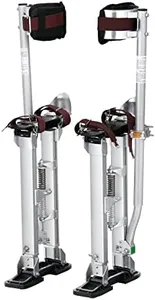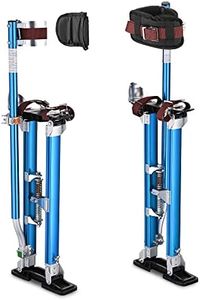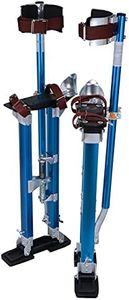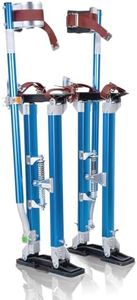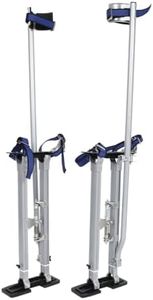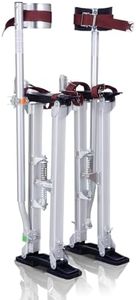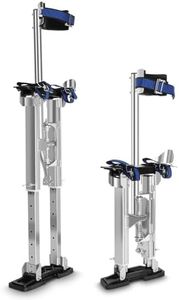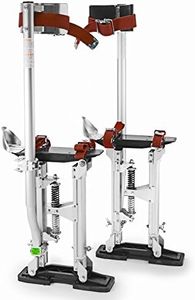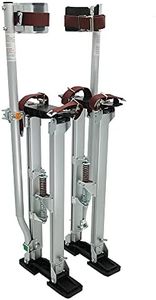We Use CookiesWe use cookies to enhance the security, performance,
functionality and for analytical and promotional activities. By continuing to browse this site you
are agreeing to our privacy policy
10 Best Drywall Stilts
From leading brands and best sellers available on the web.Buying Guide for the Best Drywall Stilts
Choosing the right drywall stilts is important for anyone planning to do ceiling work, painting, or drywall installation in high or hard-to-reach areas. The correct pair of stilts makes your job safer, more comfortable, and more efficient. Before you buy, it’s helpful to think about how often you’ll use the stilts, your body size, and the kind of tasks you’ll be doing. The right fit can save you a lot of hassle and help prevent injuries.Height Adjustment RangeHeight adjustment refers to how high off the ground you can raise yourself with the stilts. This is typically adjustable within a certain range. The importance of this feature is in how much flexibility you have to reach different heights. Shorter ranges (like 18-30 inches) are often good for low-to-mid ceilings and general use, while longer ranges (24-40 inches or more) are meant for high ceilings or specialty jobs. To pick the right height, consider the maximum height you need to reach and choose a range that easily covers it while still allowing you to keep your balance and stability.
Weight CapacityWeight capacity tells you the maximum load the stilts can safely support, including your body weight and whatever tools or materials you may carry. This is a vital safety consideration. Lower weight limits (around 200 pounds) are okay for lighter users, while higher capacities (up to 250-300 pounds or more) allow for heavier users or for carrying more tools. To choose the right capacity, factor in your own weight plus the typical gear you'll have on you, and always allow a little extra margin for safety.
MaterialDrywall stilts are often made from materials like aluminum or steel. The material affects the overall weight, durability, and comfort. Aluminum stilts are usually lighter and easier to handle, but steel ones can be more durable and sometimes more affordable. If you need to move around a lot or wear the stilts for long periods, lighter aluminum might be best. If durability and longevity for heavy-duty work are more important, steel might be a better choice.
Strap and Fastening SystemThe way the stilts attach to your legs and feet is very important for both comfort and safety. This usually involves straps or padded cuffs. A secure, adjustable, and comfortable fastening system keeps the stilts stable and prevents them from slipping, which reduces the risk of accidents. Simpler one-strap systems save time but may sacrifice comfort, while multi-strap or padded systems offer better fit and support. If you plan to use stilts for long stretches or if you move a lot, prioritize comfort and adjustability in the fastening system.
Weight of the StiltsThe total weight of the stilts themselves affects how easy they are to wear and move around in. Heavier stilts can get tiring over time, so if you expect to use them for hours or need to walk a lot, look for a lighter pair. If you only wear them occasionally or for short stretches, weight may be less of a concern. Matching the stilt weight to your working style keeps you more comfortable and less fatigued.
Adjustability and CustomizationSome stilts offer more fine-tuned adjustments for stride length, height, and even footplate angle. This helps in making the stilts feel more natural and comfortable for your body and walking style. Basic models may offer limited adjustability, while advanced ones allow you to tweak nearly everything. If you have unique needs, are taller or shorter than average, or care about ergonomics, you’ll want more adjustability. For basic occasional jobs, standard adjustment settings usually suffice.

